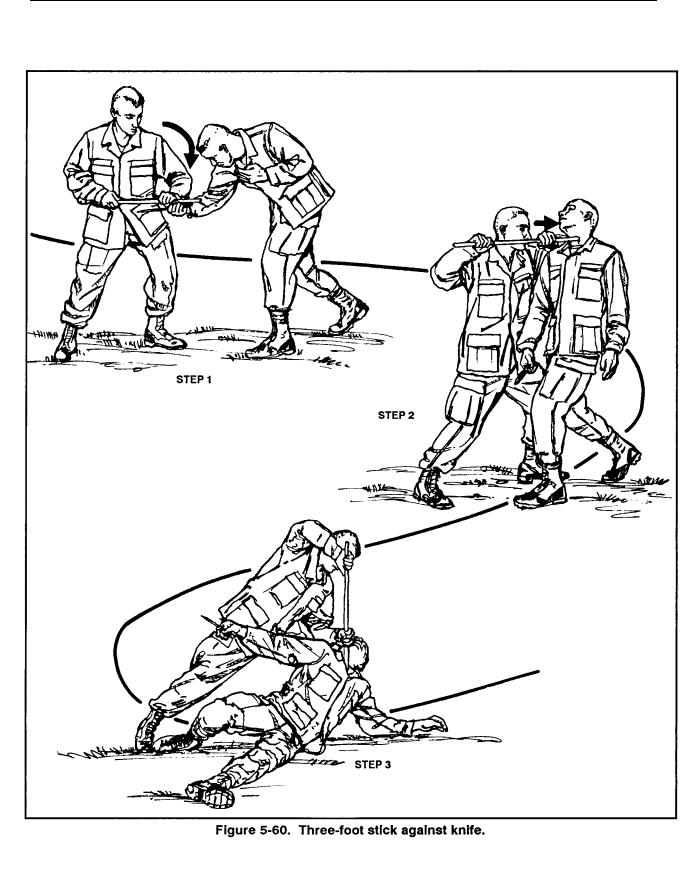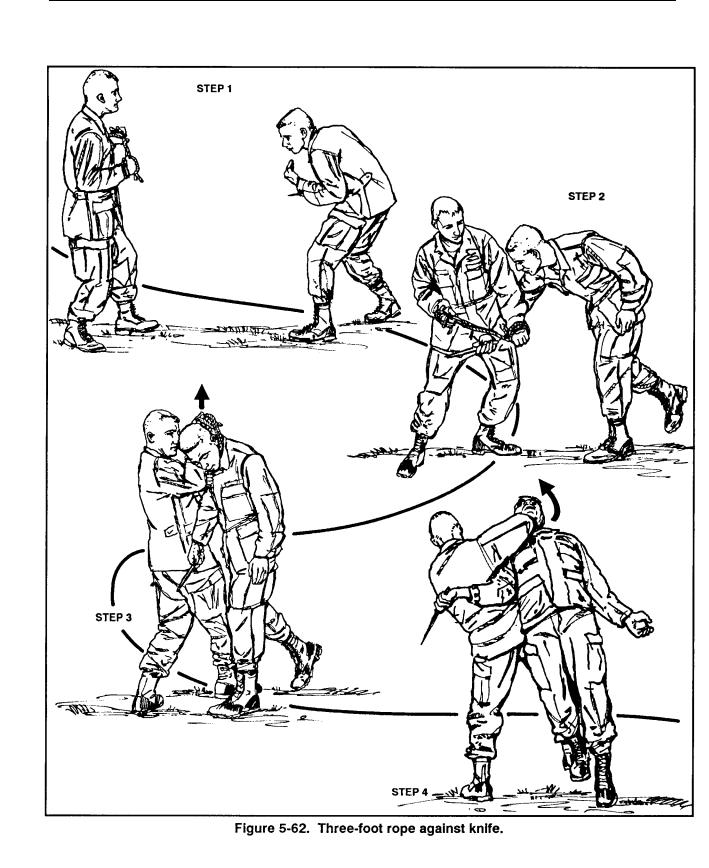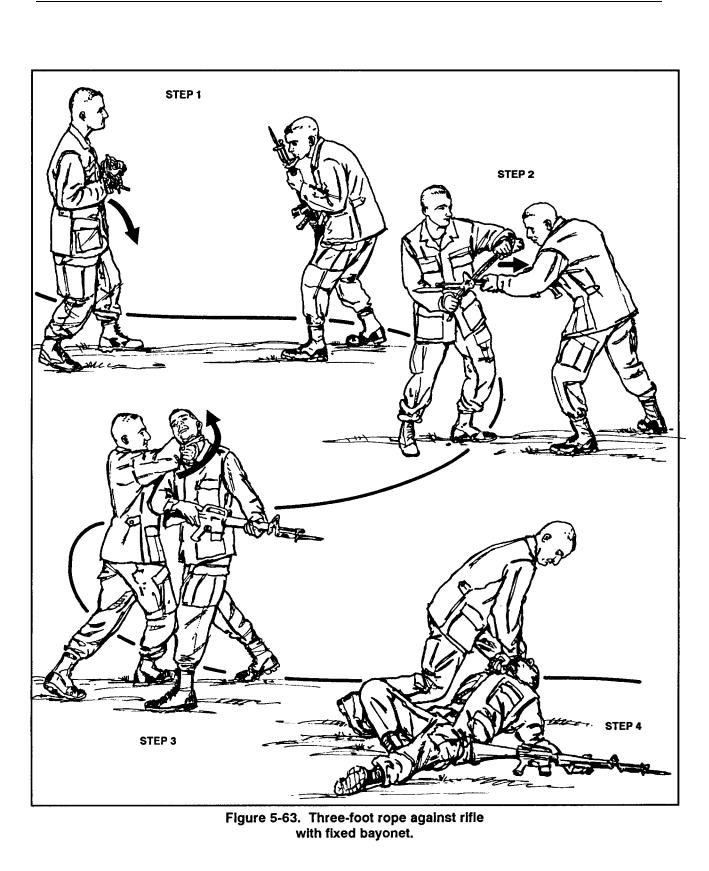
FM 21-150 COMBATIVES 1992
.pdf
FM 21-150
c. When the attacker thrusts with a knife to the stomach of the defender with a low No. 5 angle of attack, the defender moves off the line of attack to the outside and strikes vigorously downward onto the attacking wrist, hand, or arm (Figure 5-60, Step 1).
The defender then moves forward, thrusts the tip of the stick into the jugular notch of the attacker (Figure 5-60, Step 2), and drives him to the ground with his body weight—not his upper body strength (Figure 5-60, Step 3).
5-88

FM 21-150
5-89

FM 21-150
d. When using a three-foot stick against a rifle with fixed bayonet, the defender grasps the stick with two hands, one at each end, as the attacker thrusts forward to the chest (Figure 5-61, Step 1).
He steps off the line of attack to the outside and redirects the weapon with the stick (Figure 5-61, Step 2).
He then strikes forward with the forearm into the attacker’s throat (Figure 5-61, Step 3). The force of the two body weights coming together is devastating. The attacker’s neck is trapped in the notch formed by the stick and the defender’s forearm.
Using the free end of the stick as a lever, the defender steps back and uses his body weight to drive the attacker to the ground. The leverage provided by the stick against the neck creates a tremendous choke with the forearm, and the attacker loses control completely (Figure 5-61, Step 4).
5-90

FM 21-150
5-91

FM 21-150
5-13. THREE-FOOT ROPE
A section of rope about 3 feet long can provide a useful means of self-defense for the unarmed combat soldier in a hand-to-hand fight. Examples of field-expedient ropes are a web belt, boot laces, a portion of a 120-foot nylon rope or sling rope, or a cravat rolled up to form a rope. Hold the rope at the ends so the middle section is rigid enough to almost serve as a stick-like weapon, or the rope can be held with the middle section relaxed, and then snapped by vigorously pulling the hands apart to strike parts of the enemy’s body, such as the head or elbow joint, to cause serious damage. It can also be used to entangle limbs or weapons held by the opponent, or to strangle him.
a. When the attacker lunges with a knife to the stomach (Figure 5-62, Step 1), the defender moves off the line of attack 45 degrees to the outside.
He snaps the rope downward onto the attacking wrist, redirecting the knife (Figure 5-62, Step 2).
Then, he steps forward, allowing the rope to encircle the attacker’s neck (Figure 5-62, Step 3).
He continues to turn his body and sinks his weight to drop the attacker over his hip (Figure 5-62, Step 4).
5-92

FM 21-150
5-93

FM 21-150
b. When the attacker thrusts with a fixed bayonet (Figure 5-63, Step 1), the defender moves off the line of attack and uses the rope to redirect the weapon (Figure 5-63, Step 2).
Then, he moves forward and encircles the attacker’s throat with the rope (Figure 5-63, Step 3).
He continues moving to unbalance the attacker and strangles him with the rope (Figure 5-63, Step 4).
5-94

FM 21-150
5-95

FM 21-150
c. The 3-foot rope can also be a useful tool against an unarmed opponent. The defender on the left prepares for an attack by gripping the rope between his hands (Figure 5-64, Step 1).
When the opponent on the right attacks, the defender steps completely off the line of attack and raises the rope to strike the attacker’s face (Figure 5-64, Step 2).
He then snaps the rope to strike the attacker either across the forehead, just under the nose, or under the chin by jerking his hands forcefully apart. The incoming momentum of the attacker against the rope will snap his head backward, will probably break his neck, or will at least knock him off his feet (Figure 5-64, Step 3).
5-96

FM 21-150
5-97
